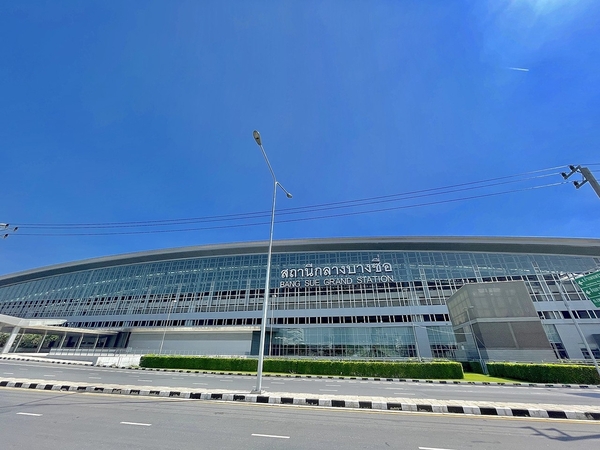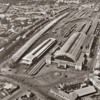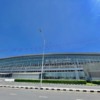Add Bangkok to the roster of cities that have turned their backs on classic central rail stations in favor of shiny new buildings, and new opportunities for development and profitable new commercial centers.
Bangkok's Hua Lamphong station lost its place in January as a hub for long-distance trains, and now serves only local and commuter traffic; the long-distance trains, and perhaps someday high-speed trains, now end at the newly-opened Bang Sue Grand Station, several miles away.
 Amin/Wikimedia
Amin/Wikimedia
Bang Sue is the largest railway station in Southeast Asia and also includes maintenance depots. The area around it has considerable land that could add to the city's collection of high-rise apartment and commercial buildings, creating a new center for development.
If the building looks familiarly European in design, it will not be a surprise to learn that it was designed by two Italian architects who may (or may not) have been inspired by the main station in Frankfurt or possibly by Turin's Porta Nuova. The style is roughly Italian Neo-Renaissance, with decorated wooden roofs and stained glass windows.
The two architects, Annibale Rigotti and Mario Tamagno, also left their mark on several other major Bangkok buildings, including the Bang Khun Phrom Palace (below) and its throne room.

The station originally handled both passengers and freight, but by the 1950s more room was needed for passengers, and freight was shifted to a railyard further away from the center. The freight shed can be seen to the left of the station in the 1946 picture above. The area where it stood is now occupied by a station entrance and roadway. During World War II, the area in front of the station included a large bomb shelter.

When I visited the station, a week or so after it lost its main terminal status, the crowds were gone; the station was quiet and business at the various stands and shops was slow. The large scale of the spaces with so few people emphasized a feeling of loss—strange, since I had never been there before!
As in many places in Thailand, the station has large displays with portraits honoring Thailand's king and members of his royal family.
The station opened in 1916, on a site formerly occupied by the State Railways maintenance shops, and directly across the road from a station, also named Hua Lamphong, belonging to another, privately-owned, railroad. Just to add to the name confusion, there are also two subway stations nearby but not under the station, and they are also Hua Lamphong.
Until January, though, the station's official name was Bangkok Railway Station, when it became Bangkok (Hua Lamphong) Railway Station. There are a number of colorful, and conflicting, stories about what Hua Lamphong means and where it comes from. No answer to that one here!
Although it is now closed, the station had a separate ticket office for foreigners, presumably staffed with agents used to the dozens of languages that pass through the city.
Passing through to the platform area, a variety of trains awaiting passengers, or in some cases, just stored on side tracks.
A grand station with a grand past, still looking like the starting point for important journeys... and perhaps it has one of its own: There is a proposal to turn large areas of the station into a museum of Thailand's railways.
Perhaps, despite the bumper at the end of the track, it's not really the end.




Comments (0)